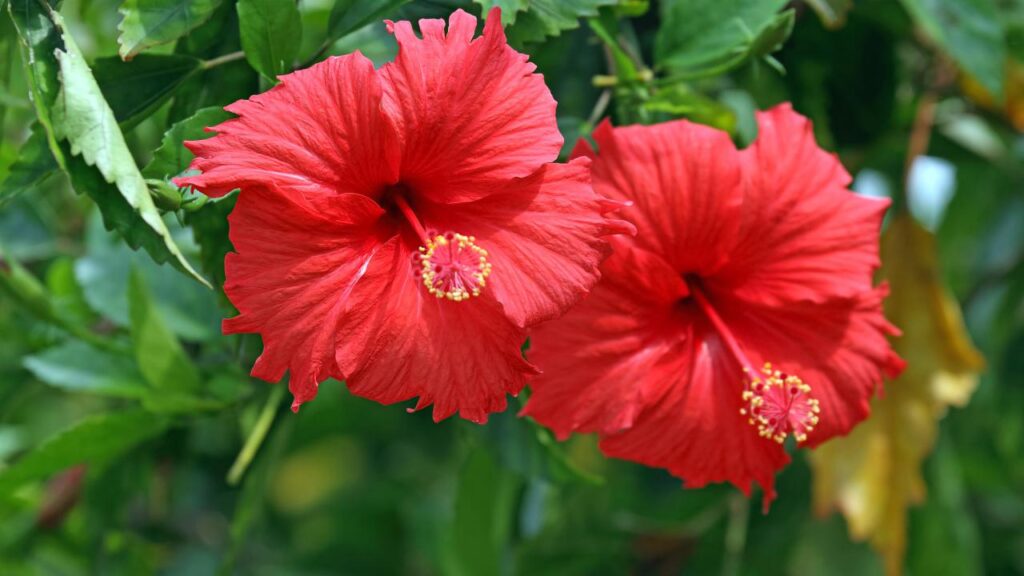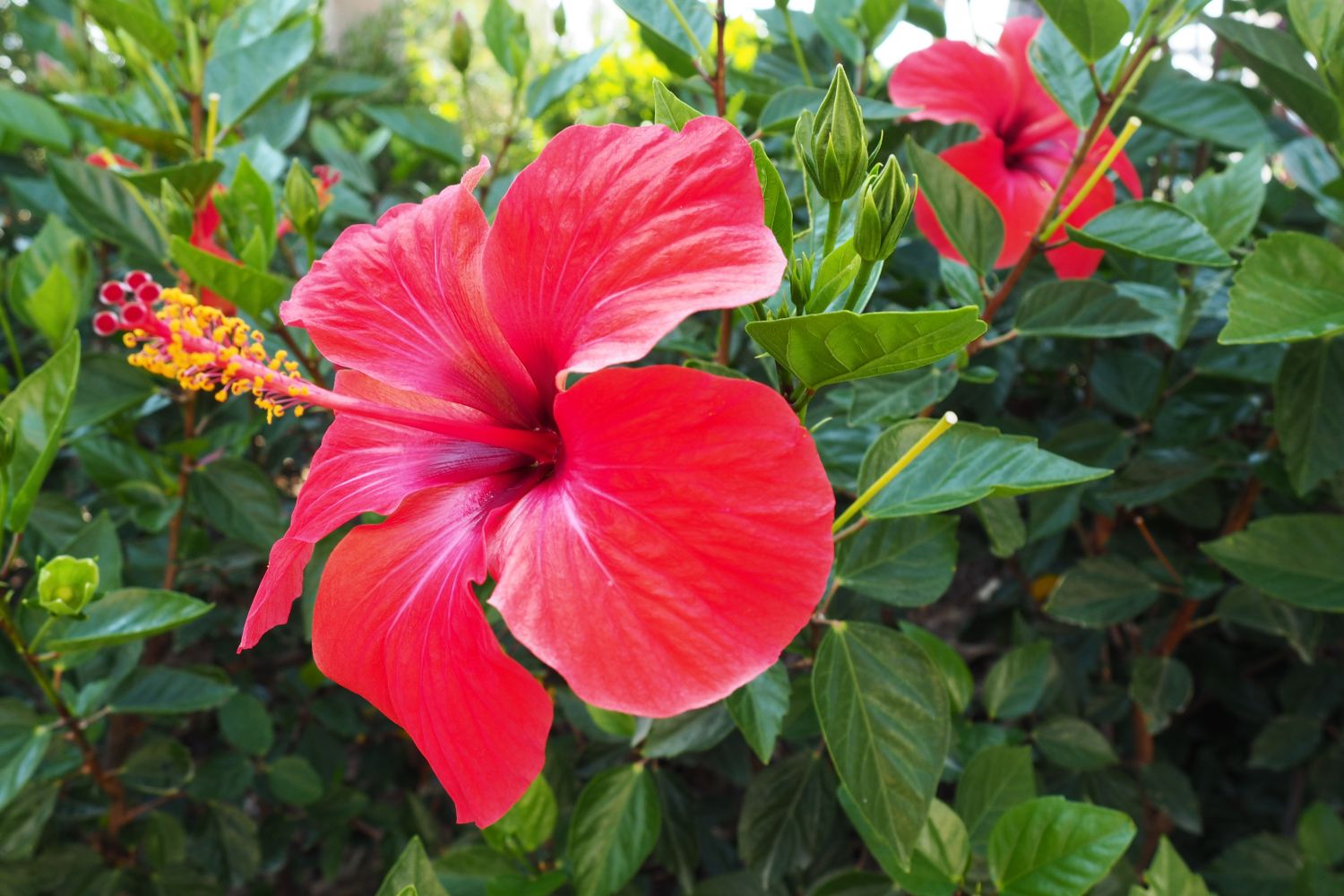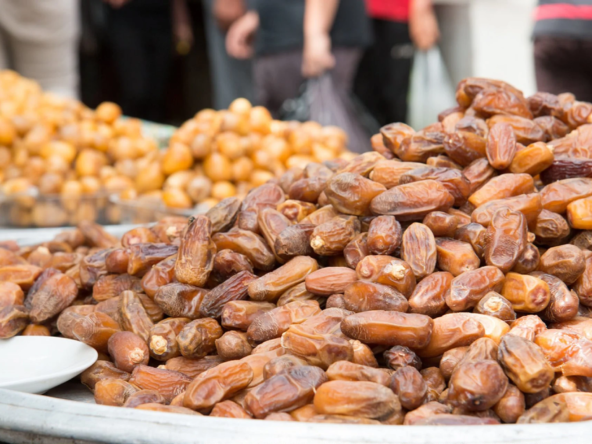Hibiscus plants, known for their vibrant flowers and lush foliage, are popular in gardens worldwide. However, like any other plant, they are vulnerable to various pests and diseases. Effective management of these issues is crucial for maintaining the health and beauty of your hibiscus plants. This article will guide you on how to identify and manage the most common pests and diseases that affect hibiscus plants.
Common Pests Affecting Hibiscus Plants
- Aphids
- Identification: Aphids are small, soft-bodied insects, usually green, yellow, black, or brown. They tend to cluster on new growth, buds, and the undersides of leaves. Aphids secrete a sticky substance called honeydew, which attracts ants and promotes the growth of sooty mold.
- Signs of Infestation: Curled, distorted leaves, stunted growth, and the presence of honeydew or sooty mold on the plant are signs of an aphid infestation.
- Management:
- Cultural Control: Regularly inspect plants and remove aphids manually by spraying them off with water. Encouraging natural predators like ladybugs and lacewings can also help control aphid populations.
- Chemical Control: Insecticidal soaps or neem oil sprays can be effective against aphids. Use these treatments according to the label instructions to avoid damaging the plant.
- Whiteflies
- Identification: Whiteflies are small, white, winged insects that resemble tiny moths. They usually congregate on the undersides of leaves.
- Signs of Infestation: Yellowing or wilting leaves, stunted growth, and a sticky residue (honeydew) on leaves are indicators of a whitefly infestation. If disturbed, they will fly up in a cloud.
- Management:
- Cultural Control: Remove heavily infested leaves and introduce natural predators like parasitic wasps or predatory beetles. Yellow sticky traps can also help catch adult whiteflies.
- Chemical Control: Use insecticidal soap, neem oil, or systemic insecticides as a last resort. Regularly rotating different types of insecticides can prevent the whiteflies from developing resistance.
- Spider Mites
- Identification: Spider mites are tiny arachnids, often red or yellow, and are difficult to see without a magnifying glass. They usually live on the undersides of leaves.
- Signs of Infestation: Stippling or yellowing of leaves, fine webbing on the plant, and leaves that drop prematurely are common signs of spider mites.
- Management:
- Cultural Control: Regularly spray the hibiscus plants with water to dislodge mites and increase humidity, as spider mites thrive in dry conditions. Prune and remove infested plant parts.
- Chemical Control: Miticides or insecticidal soaps can be used to manage spider mites. Be cautious with chemical treatments, as overuse can lead to resistance.
- Mealybugs
- Identification: Mealybugs are small, white, cotton-like insects that cluster in plant crevices, on stems, and under leaves.
- Signs of Infestation: White, cottony masses on the plant, stunted growth, yellowing leaves, and the presence of sooty mold are signs of mealybugs.
- Management:
- Cultural Control: Wipe the affected areas with a cotton swab dipped in rubbing alcohol to remove mealybugs. Regularly inspect plants and remove any visible insects.
- Chemical Control: Insecticidal soaps, neem oil, or systemic insecticides can be used to treat mealybug infestations.
- Scale Insects
- Identification: Scale insects are small, flat, oval-shaped pests that appear as small, brown or black bumps on stems, leaves, and branches. They are often mistaken for plant growths.
- Signs of Infestation: Yellowing leaves, stunted growth, and the presence of honeydew and sooty mold indicate a scale insect problem.
- Management:
- Cultural Control: Scrape off scale insects with a soft brush or cloth. Prune heavily infested branches. Encourage beneficial insects like ladybugs and parasitic wasps.
- Chemical Control: Apply horticultural oil or systemic insecticides to manage scale infestations. Follow all label instructions carefully.
- Thrips
- Identification: Thrips are tiny, slender insects that are usually yellow, brown, or black. They can be challenging to see, but you may notice their damage first.
- Signs of Infestation: Silvering of leaf surfaces, black specks of frass (insect excrement), distorted or discolored flowers, and leaf drop are typical signs of thrips.
- Management:
- Cultural Control: Remove affected flowers and leaves. Use blue or yellow sticky traps to capture adult thrips. Encourage natural predators like predatory mites.
- Chemical Control: Use insecticidal soaps or spinosad to control thrips populations. Repeated applications may be necessary to manage severe infestations.

Common Diseases Affecting Hibiscus Plants
- Powdery Mildew
- Identification: Powdery mildew is a fungal disease that appears as a white or gray powdery coating on leaves, stems, and buds.
- Signs of Disease: Leaves may yellow, curl, and drop prematurely. Infected flowers may not open or may be deformed.
- Management:
- Cultural Control: Ensure good air circulation around plants by pruning and spacing them adequately. Water plants at the base to avoid wetting the foliage. Remove and dispose of infected leaves.
- Chemical Control: Apply fungicides like sulfur or neem oil. Baking soda mixed with water and a bit of dish soap can also be used as a homemade remedy.
- Root Rot
- Identification: Root rot is typically caused by waterlogged soil and poor drainage, which promote the growth of fungi like Phytophthora and Pythium.
- Signs of Disease: Wilting, yellowing leaves, stunted growth, and a foul odor from the soil. The roots will appear black or mushy.
- Management:
- Cultural Control: Ensure the hibiscus is planted in well-draining soil and avoid overwatering. Remove affected parts of the plant and replant in fresh soil if necessary.
- Chemical Control: Fungicides like mefenoxam or phosphonate can be used to treat root rot. However, prevention through proper watering practices is most effective.
- Leaf Spot
- Identification: Leaf spot is caused by various fungi or bacteria and appears as dark, circular spots on the leaves.
- Signs of Disease: Small brown, black, or yellow spots on leaves that may merge to form larger patches. Leaves may yellow and drop prematurely.
- Management:
- Cultural Control: Remove and destroy infected leaves. Improve air circulation by pruning overcrowded branches. Avoid overhead watering.
- Chemical Control: Copper-based fungicides or neem oil can help manage leaf spot diseases. Apply according to the product instructions.
- Botrytis Blight
- Identification: Botrytis blight, also known as gray mold, is caused by the Botrytis cinerea fungus. It thrives in cool, damp conditions.
- Signs of Disease: Grayish-brown fuzzy mold on leaves, flowers, and stems. Infected buds may fail to open, and leaves may become discolored and drop.
- Management:
- Cultural Control: Remove and dispose of infected plant material. Ensure adequate spacing and pruning for good air circulation. Water at the base of the plant to keep foliage dry.
- Chemical Control: Fungicides like chlorothalonil or copper-based products can be used to control botrytis blight. Apply at the first sign of disease.
- Hibiscus Mosaic Virus
- Identification: The Hibiscus Mosaic Virus (HMV) is a viral disease transmitted by insects such as aphids and thrips.
- Signs of Disease: Mosaic patterns of light and dark green or yellow on leaves, distorted or deformed leaves, and stunted growth.
- Management:
- Cultural Control: Remove and destroy infected plants. Control insect vectors like aphids and thrips to prevent virus spread. Avoid using infected tools or cuttings.
- Chemical Control: There is no cure for viral infections in plants. Focus on preventive measures and control of insect vectors.
General Tips for Managing Pests and Diseases on Hibiscus Plants
- Regular Monitoring: Regularly inspect hibiscus plants for signs of pests and diseases. Early detection is crucial for effective management.
- Maintain Plant Health: Healthy plants are less susceptible to pests and diseases. Ensure proper watering, fertilization, and pruning practices.
- Sanitation: Remove and dispose of diseased or infested plant material promptly. Clean gardening tools regularly to prevent the spread of pathogens.
- Encourage Beneficial Insects: Encourage natural predators like ladybugs, lacewings, and predatory mites by planting nectar-rich plants and avoiding broad-spectrum insecticides.
- Rotate Chemical Treatments: If using chemical controls, rotate different products to prevent pests from developing resistance.
Preventive Measures for Hibiscus Plant Health
- Proper Planting Site: Choose a location with adequate sunlight and well-draining soil to promote healthy growth.
- Watering Practices: Water plants at the base to prevent moisture accumulation on leaves, which can lead to fungal diseases. Avoid overwatering to prevent root rot.
- Fertilization: Use a balanced fertilizer to provide essential nutrients for healthy growth. Avoid over-fertilizing, as excessive nitrogen can make plants more susceptible to pests.
- Pruning: Regularly prune hibiscus plants to remove dead or diseased branches and improve air circulation, reducing the risk of fungal diseases.
- Mulching: Apply mulch around the base of the plant to retain moisture, regulate soil temperature, and suppress weeds. Avoid piling mulch against the stem to prevent rot.
Conclusion
Identifying and managing common pests and diseases that affect hibiscus plants requires vigilance, knowledge, and a proactive approach. By understanding the signs and symptoms of these problems and implementing effective cultural, biological, and chemical control methods, gardeners can keep their hibiscus plants healthy and thriving. Remember, prevention is always better than cure, so maintain good gardening practices, monitor plants regularly, and act swiftly at the first sign of trouble.
Ajigofarms is a reliable global agricultural purchase sourcing with profound expertise in the manufacturing, and exportation of food crops. We are tested, and trusted suppliers of all kinds of cash crops and food crops. Our constant supply chain solution makes exporting easy, quick, and safe, we are identified with timeliness and meeting up with deadlines. Regardless of the region you are located in worldwide, you can reliably order your Agric products and be rest assured of successful delivery.




